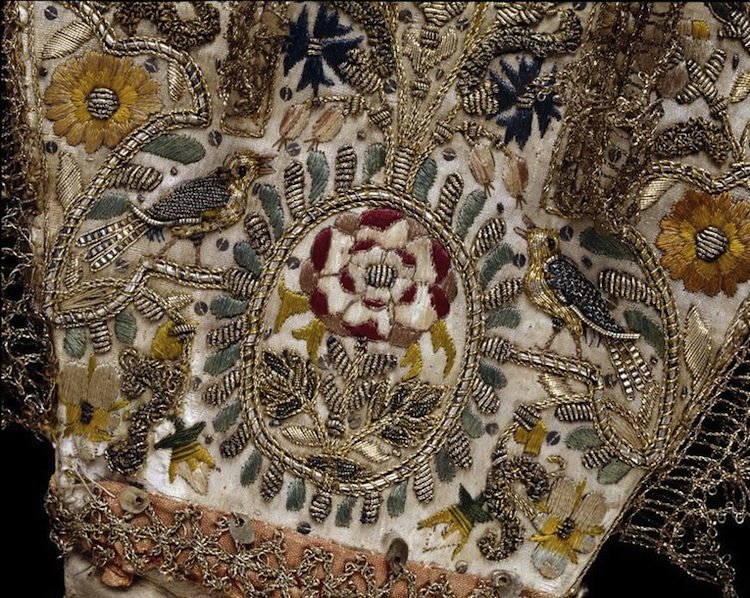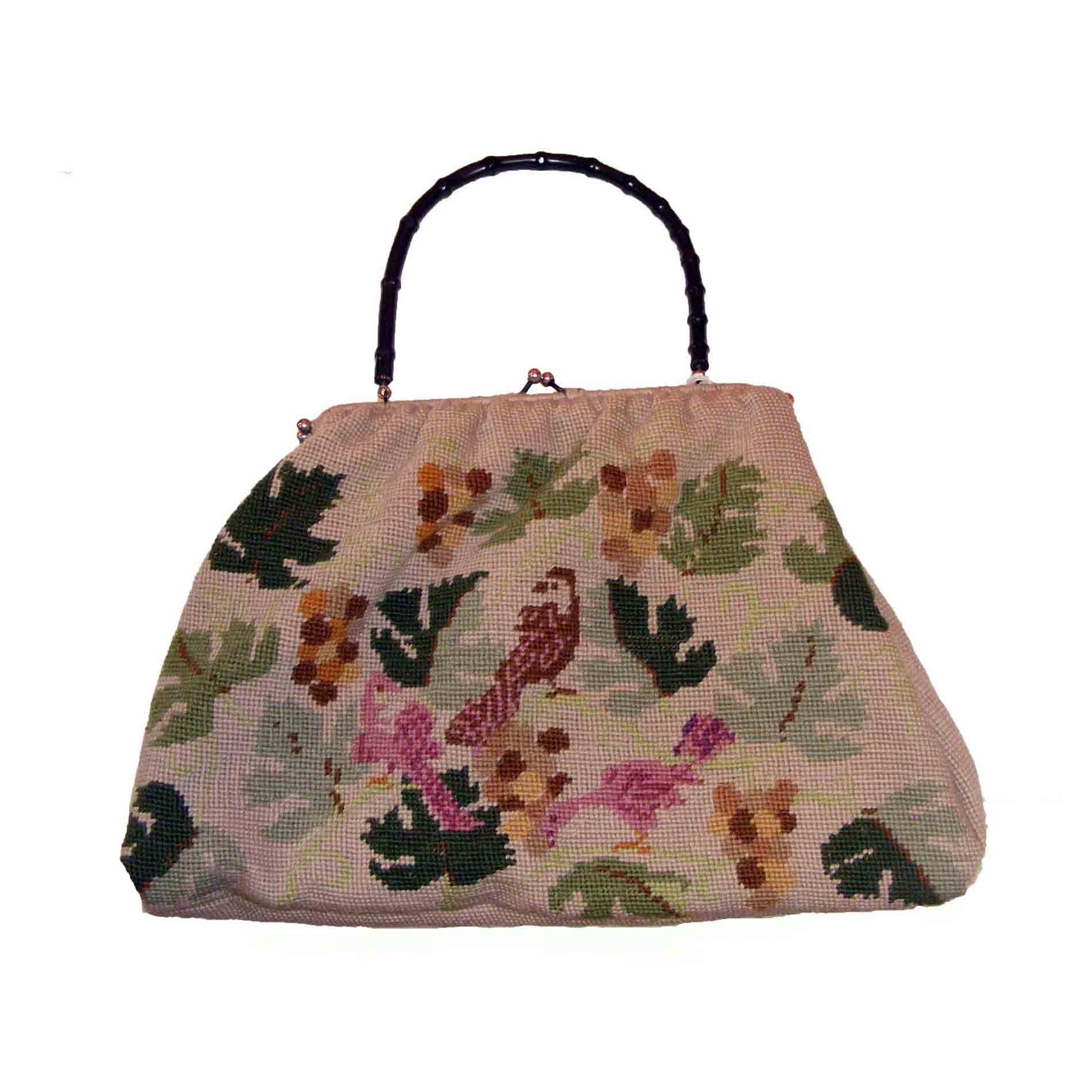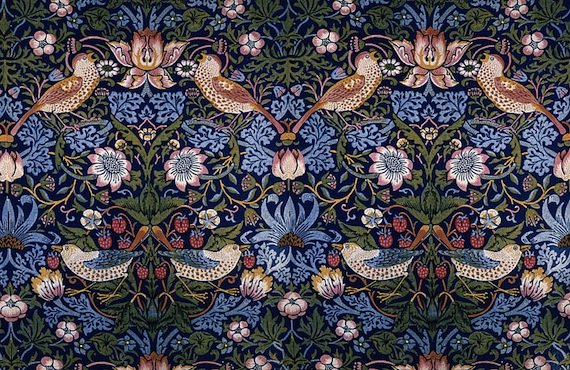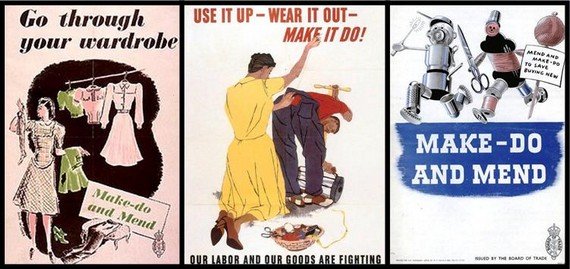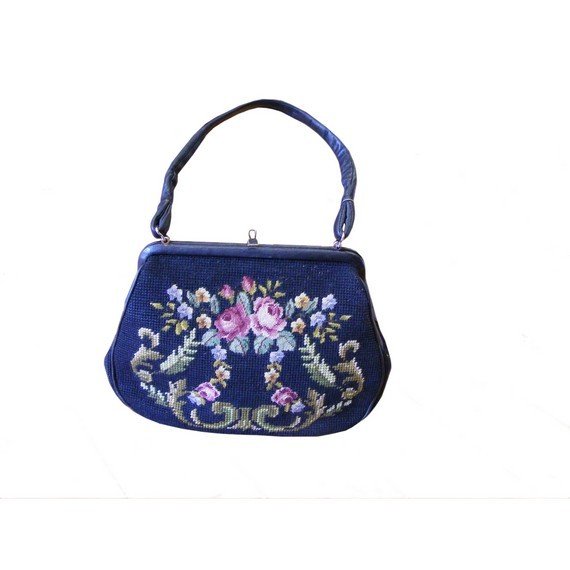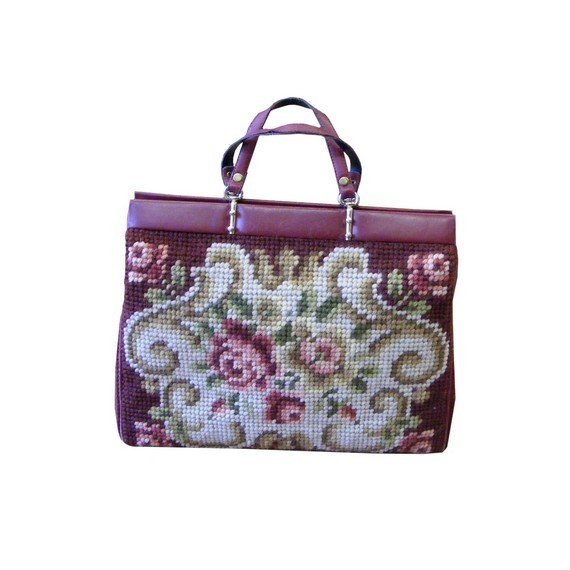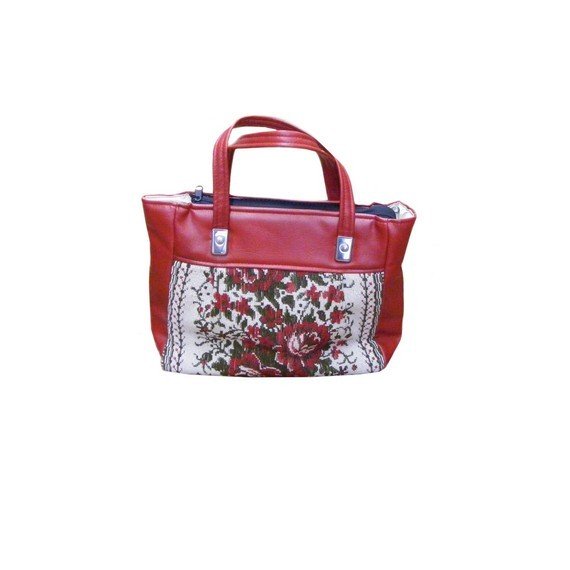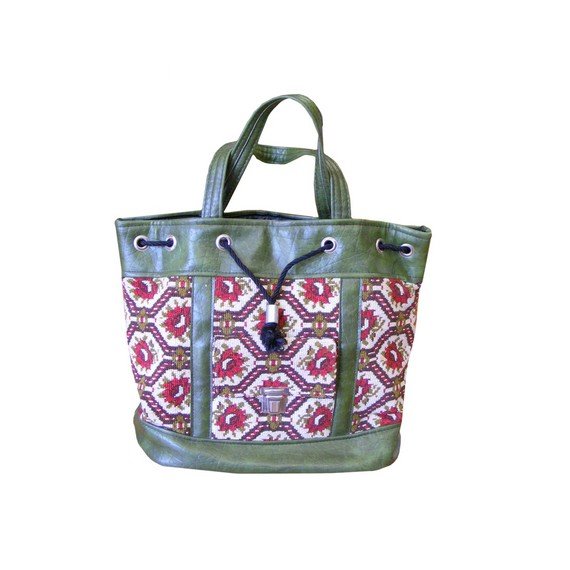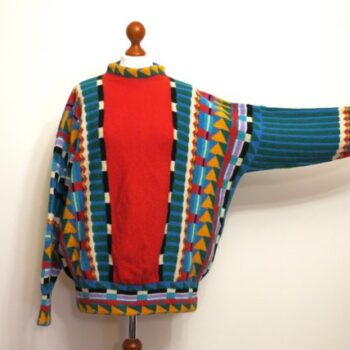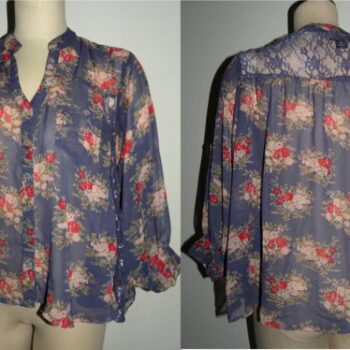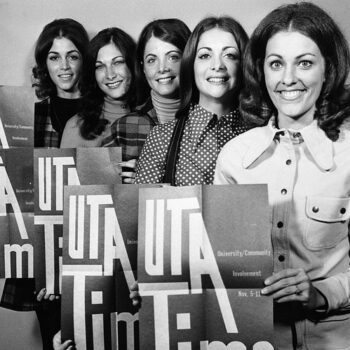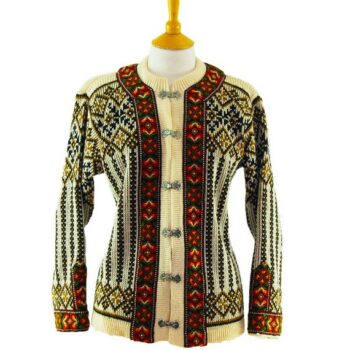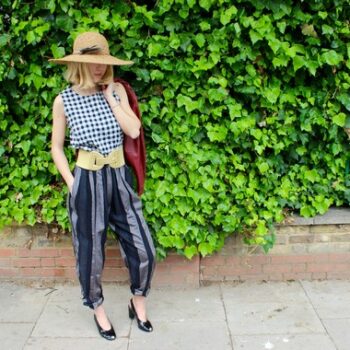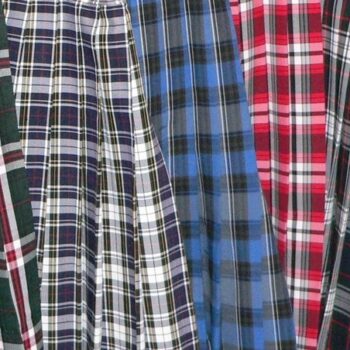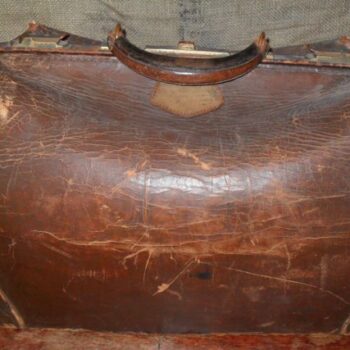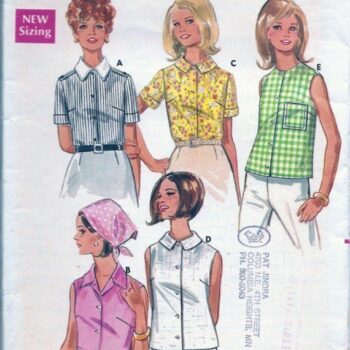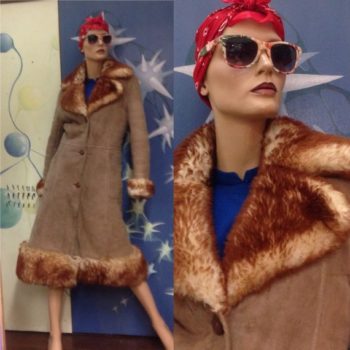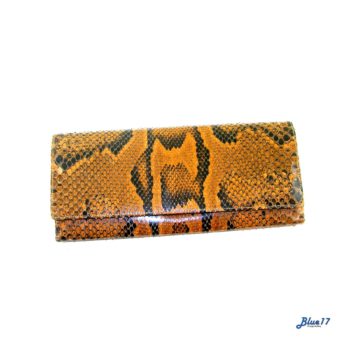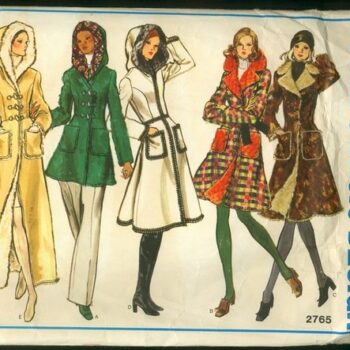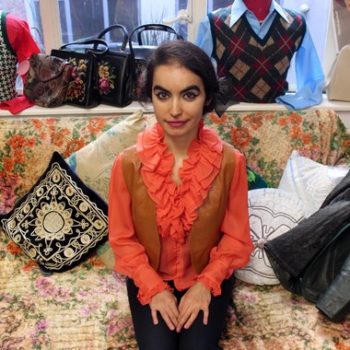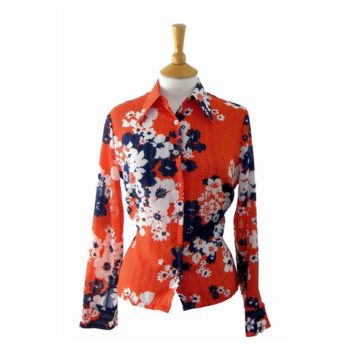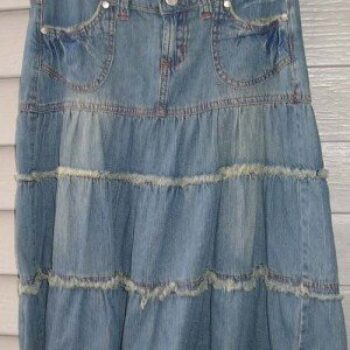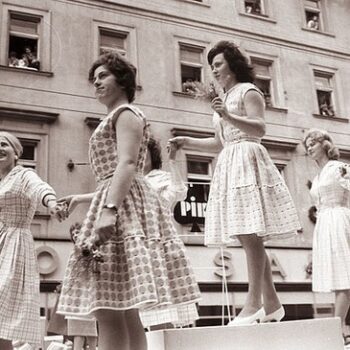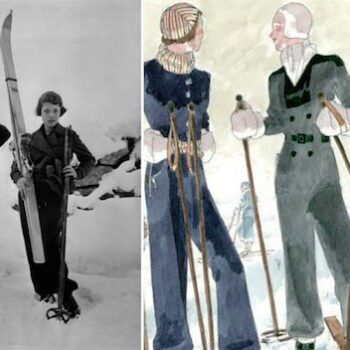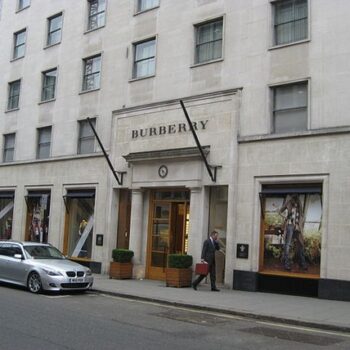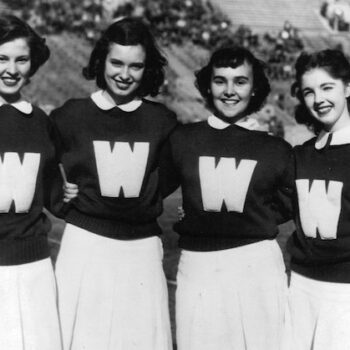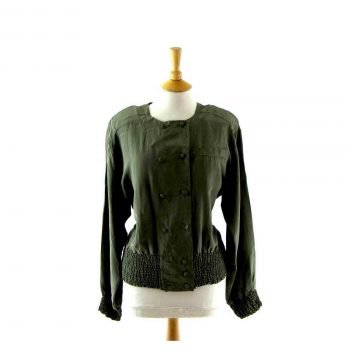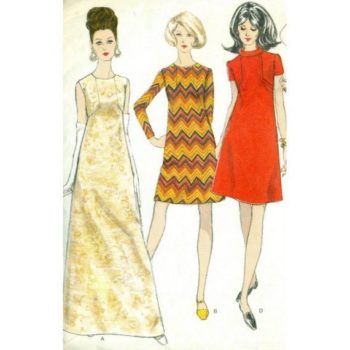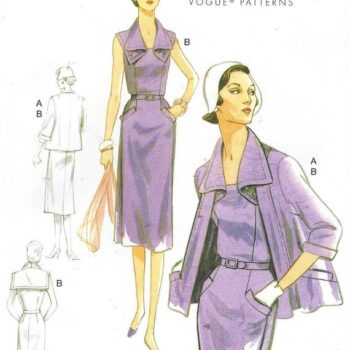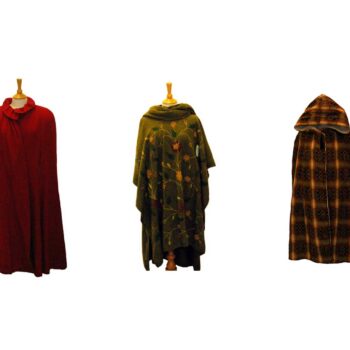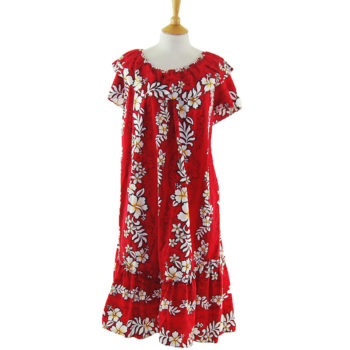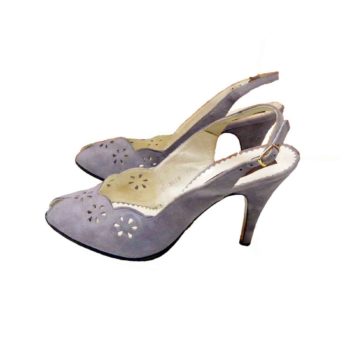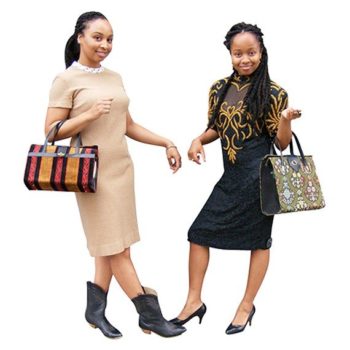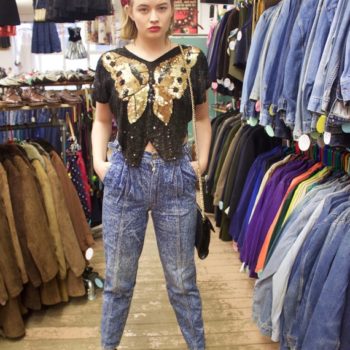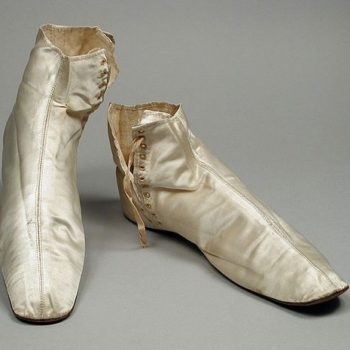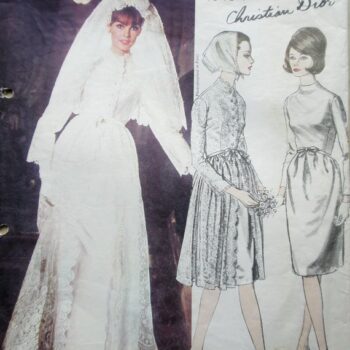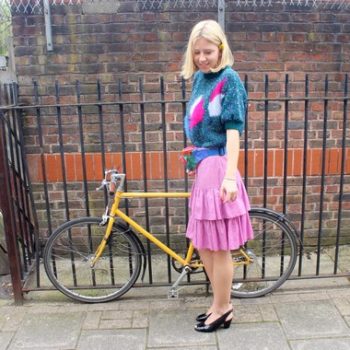Vintage Womens Tapestry Bags
March 2, 2015The history of the bag is an interesting one, and vintage Womens Tapestry Bags and handbags have changed in size, shape and intended use according to fashion and practical demands, century by century. In the Fourteenth and Fifteenth Century, the handbag is more of a purse, dangling from a woman’s girdle. It keeps company with a rosary, a book of hours, a pomander, and sometimes a small dagger. All practical items.
History of Vintage Womens Tapestry Bags
The purse contained money. They were very often embroidered in tiny stitches, and some of the very earliest womens tapestry bags were woven. The designs could feature the crest of the house or even a marriage portrait.
By the Sixteenth and Seventeenth Century, purses could be made of soft leather, velvet, silk, or cloth of gold or silver and were getting bigger. They were still hung from the belt and contained not only coins now but also the useful household items that previously hung separately. Peasants and travellers also had larger bags, like satchels, of leather or cloth and worn across the body. Men started to wear pockets which were set into the sides of their breeches, and by the end of the Sixteenth Century the woman’s bag hung from a long string, and was rather more concealed among her skirts. Previously the purse had often been made of a luxurious fabric and intricately decorated and was actually meant to stand out, screaming “Look! I am rich and probably generous, too!”
Small bags were also employed in this time to hold herbs and spices. They were sweet smelling and therefore called “Swete Bagges”. They acted a bit like a modern deodorant, disguising not only the wearer’s noxious fumes but that of those around them, so noblemen and women could float around in a cloud of musk, amber, damask rose or lavender. The bags were also placed between clothes in storage, like lavender bags today.
More Recent Vintage Womens Tapestry Bags
Moving on from their origins in delicately hand worked tapestry, you’re more likely to find vintage womens tapestry bags from the 80s. Quite often they are copies of a Victorian style work bag, which were hand stitched and used to keep all a lady’s sewing or knitting equipment in. You may even get a lovingly hand stitched one yourself – just possibly not from the turn of the century. If you particularly love the design on an old one but it’s just too old and delicate to use, you can transfer the design and make one yourself to the same dimensions. It’s easy to get all the bits you need from the haberdashery store.
Vintage womens tapestry bags are sweet and usually quite large, making them practical. They sometimes come in well known designs too, like William Morris’s “Strawberry Thief” or ecclesiastical motifs.
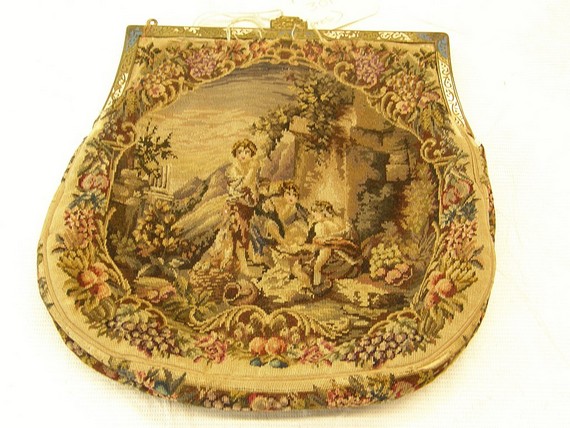
Delicate Victorian Needlework purse. Auckland Museum, CC BY 4.0 <https://creativecommons.org/licenses/by/4.0>, via Wikimedia Commons
As well as the bigger tote or hold all style, you can get vintage Womens Tapestry Bags with metal frames, like largish purses, or a kind of hippy “Navajo” style with a brown leather (or fake leather) trim. So perfect when you’re going for a 90’s revival!
As we know accessories were an important part of an outfit regardless of its practicality – you could be dressing up or down, but gloves, hat, scarf and bag were essential items to have with you.
What started out started as pockets, purses and wallets, graduated to the simple yet practical handbag
Vintage Womens Tapestry Bags – 50s to 70s
In the thirties bags had been flamboyant and ostentatious, but the forties had brought a certain austerity to fashion due to the war and with a shortage of materials, as we’ve seen in a previous blog, women were making their own.
From ostentation to austerity and back again
As the fifties came into being there was still a certain utilitarian way of dressing that would gradually change towards the middle of the decade, and towards the end become more exciting in fashion terms with new designers, materials and fabrics being used to create livelier clothing and accessories.
The sixties – transition, colour, shape and length
The sixties certainly became much more colourful and bright, with Pucci’s psychedelic colours and the move towards looser and often shorter garments. This decade was certainly a time of transition, moving away from the 50s silhouette and moving towards more individualistic shapes and more personalised items.As we know, the handbag had always been an essential part of a woman’s wardrobe and was important as a fashion statement as well as for more practical purposes.
The tapestry handbag becomes a popular accessory – vintage 1960s or 1970s
Colourful accessories such as handbags came in different shapes and colours and tapestry was also very popular. It was reminiscent of the 19th century, when needle point embroidery was often used for handbags and purses, which naturally, were a lot smaller than the ones they made during the sixties.
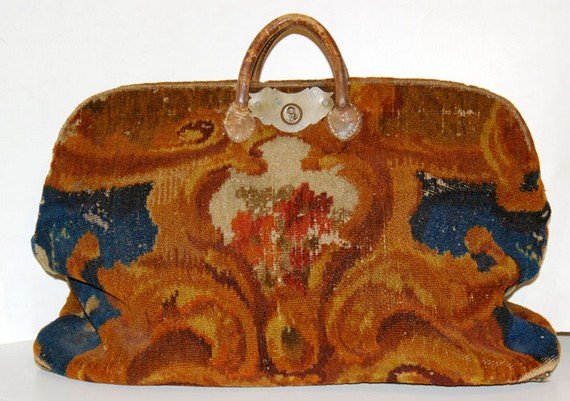
Carpet bag circa 1910. Sobebunny, CC BY-SA 3.0 <https://creativecommons.org/licenses/by-sa/3.0>, via Wikimedia Commons
Shapes of birds, flowers, plants
They were stunning, often with a black background and vibrant hues with intricate embroidered shapes and colours that took the shape of birds, flowers, plants and simple patterns.
The sixties certainly embraced the tapestry bag and as the bag became larger so the tapestry became more intricate, even the shoulder bag was larger and with the lush tapestry patterns, it was a real fashion statement piece.
1970’s Vintage Womens Tapestry Bags
They would be every bit as popular in the seventies, with the larger carpet bag holding its own throughout the decade.
Thinking of investing in a tapestry handbag?
With such bold patterns it’s difficult to imagine what to wear with the tapestry handbag – too many colours and patterns in your coat or in the rest of your outfit, then you’re going to be a bit of an eyesore.
Match colours with your wardrobe
It’s best therefore to only wear plain colours, with little or no patterns and let your handbag take centre stage. Before investing in the tapestry bag, take a look at your wardrobe and carefully look at the pattern of your chosen bag, are there colours in the tapestry that are easy to match with what you already own?
Once you’ve found a bag that’s going to match your colours,try and match it with a pair of pants, top, skirt or dress. It should help focus on the beautiful patterns in the bag, and make whatever you’re wearing stand out.
If you have a tapestry bag with a black background then a black sweater, pants or dress creates a striking look, match it with a classic pair of heeled pumps.
The vintage tapestry bag back is still in vogue and is unlikely to go out of style anytime soon. The good news is that on Blue17 there are plenty of vintage Womens Tapestry bags to choose from ranging in colour, shape and size from both the sixties and seventies, so take a look around.
Shop Tapestry bags
1950s fashion wide circle skirts
tapestry boots to go with tapestry bag



